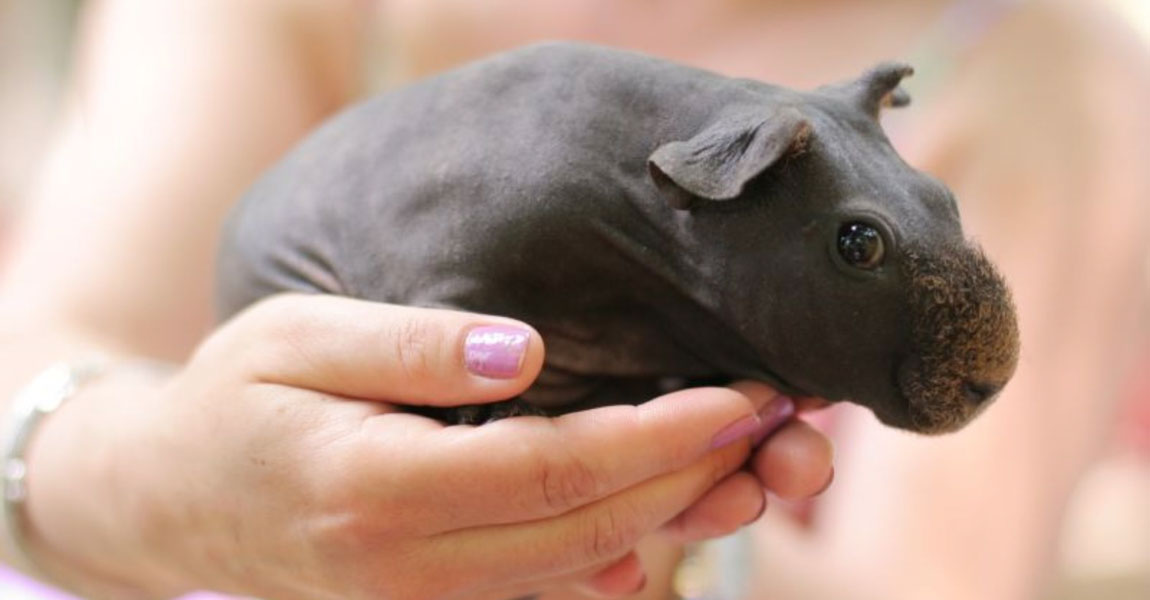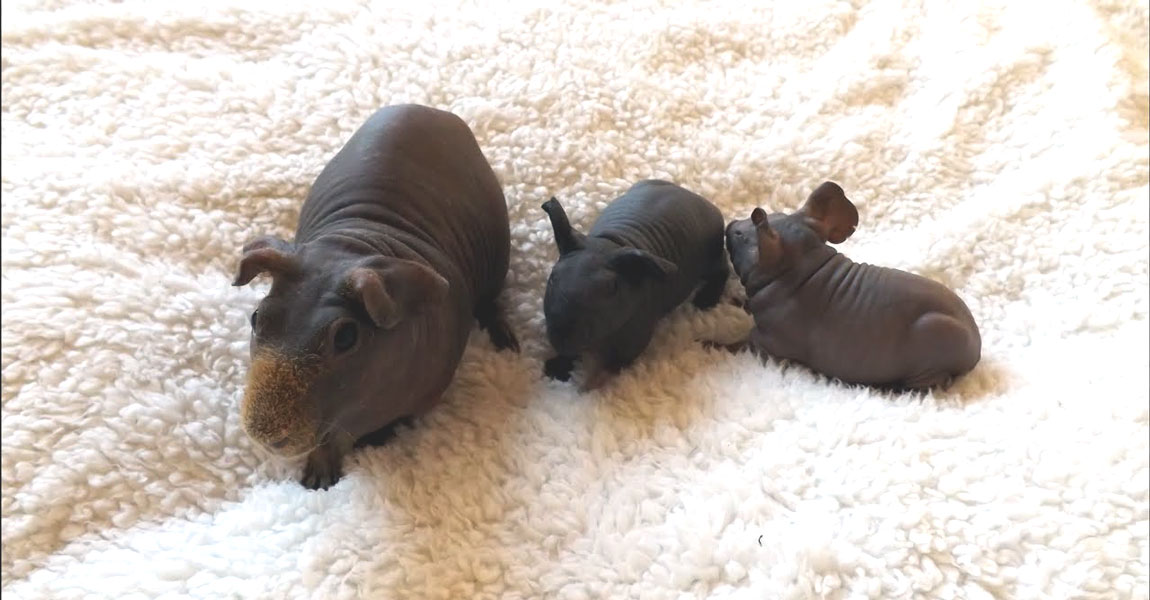What Do Guinea Pigs Eat?
At the most basic level, guinea pigs are herbivores. That means that they just eat fruits and veggies—no dairy, eggs, meat, or insects for these little guys. Fresh hay and fresh leafy vegetables should make up the bulk of your guinea or skinny pig’s diet.
Any guinea pig owner needs to keep two important things in mind when choosing food:
- Vitamin C: Guinea pigs can’t formulate their own Vitamin C,2 making them vulnerable to scurvy. Guinea pig pellets should include Vitamin C to keep your pet healthy.
- Constant-Growing Teeth: Guinea pig teeth are always growing. It’s important to give your guinea pig something fibrous to chew on. This is where hay is super important. Hard pellets alone won’t do the trick!
That said, it’s also important not to transition your guinea pig’s diet too quickly. If needed, be sure to go slow while you transition your guinea pig from her original diet in her old home or from the pet store to a healthier diet.
You might also catch your guinea pig eating her own poop, but don't be alarmed! Guinea pigs actually produce two different types of feces. One is soft and nutritious, and the guinea pigs re-ingest this to get more nutrients. Rabbits do the same thing!
The other type of poop is harder and is produced after the food has been digested twice. That’s the poop that you clean up when you clean your guinea pig’s cage!
When Should I Feed My Guinea Pig?
Like most herbivores, guinea pigs are essentially grazers. They munch on hay and veggies all day. That means it’s important to keep fresh hay available constantly.3It’s best to dump out your guinea pig’s food and water every day, clean the bowls, and fill them with fresh food and water.
Feeding Guinea Pigs Store-Bought Food
Most owners will opt to feed their guinea pigs store-bought pellets and hay. Be sure to purchase pellets that are specifically formulated for guinea pigs.For hay, a mix of timothy, orchard, and oat is best. Some alfalfa hay is acceptable but it contains too much calcium to be the main part of your pet’s diet. Guinea pig hay needs to be stored in a cool, dry place to stay clear of mold or mildew.3
Supplement your guinea pig’s hay with a small amount of high-quality pellets. Opt for plain pellets rather than a mix, as this prevents your guinea pig from just picking out the tasty bits and ignoring the healthy ones!
Feeding Guinea Pigs Fresh Foods
Fresh fruits and veggies are great treats and supplements for your guinea pig. Vegetables and fruits are great treats to offer your guinea pig. You can use these as extra-special offerings to help bond with your guinea pig or as treats for training.
Good fresh foods to feed your guinea pig include:
Bananas
Blueberries
Cantaloupe
Green peppers
Parsley
Green and red leaf lettuce
Strawberries
Tomatoes
Watermelon
Offer your guinea pig more vegetables than fruits.1 She might love fruits, but they’re like candy for guinea pigs! Always be sure to clean up any uneaten fresh foods at the end of the day to avoid mold or rot.
Toxic Foods for Guinea Pigs
Not all fruits and veggies are safe for guinea pigs to eat. Be sure to avoid feeding your guinea pig:Avocados
Chives
Coconuts
Garlic
Grapes
Onions
Raisins
These foods are actually dangerous for many pets. These same foods often pop up on lists of toxic foods for dogs, parrots, and cats.
Always avoid feeding your guinea pig sweet or salty human “junk food,” even if none of the ingredients are toxic. Since guinea pigs can’t eat garlic or onions, much of our cooked food is off-limits as well. It’s generally best to stick to feeding your guinea pig a diet of hay and high-quality pellets, with occasional treats of fresh fruits and veggies.
Source: SprucePets.com





